Water is a vital but scarce resource for pastoral communities in the Turkana Basin. The situation has been worsened by climate change, which often results in prolonged periods of drought or floods. Water sources determine the movement pattern and settling sphere of people and their livestock. During dry seasons, the Daassanach move around in search of water and pasture for their livestock, and face competition from other pastoralist groups such as the Gabbra for this precious resource. In recent years, various organization have helped to dig wells and construct water pumps for the Daassanach.
To understand the challenges the Daassanach face while looking for water, students practiced digging wells in the Il-Kimere Laga, a seasonal watercourse. They had only a metal can and a lid as digging tools. Traditionally, the Daassanach have always used cans and lids (metal and plastic) in digging wells, though these days often use a shovel. First they had to locate a suitable spot. Luckily enough, it had rained the previous night, and it was therefore easier for them to dig. Daassanach women spend much of their time walking long distances to the Laga to fetch water. Prolonged droughts result in shortages of surface and ground water, and often the ground is hard for the women to dig. Most of them carry a 20-litre jerrican full of water back home, trekking many kilometres. This exercise helped students understand the difficulties of a pastoral existence, especially during dry seasons.
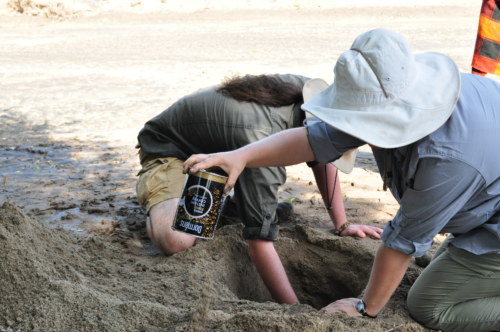
Amber and Michael digging their well. Photo credit: Wambui Mbogo.
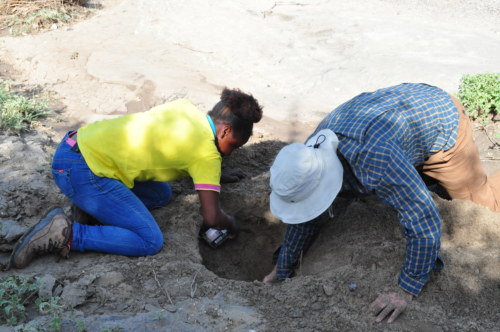
Clara and Joe busy scooping the sand. Photo credit: Wambui Mbogo.
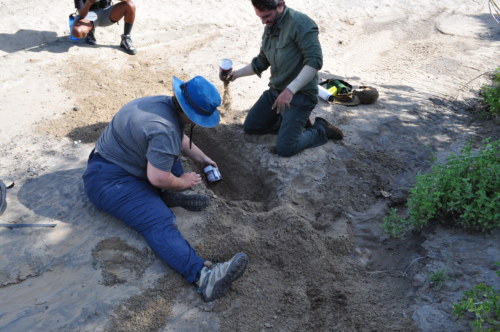
Emma and Zak dig their well. Photo credit: Wambui Mbogo.
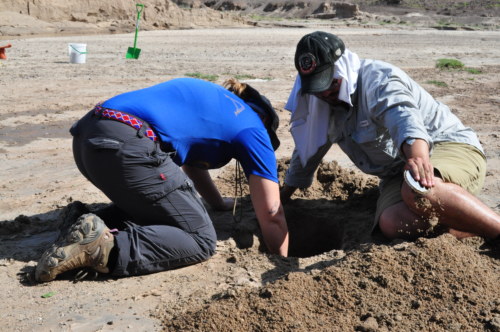
Becca and Jared working together. Photo credit: Wambui Mbogo.
At first, students chose digging spots that were slightly difficult (they needed to dig around a metre to find water). After unsuccessful digging for a few minutes, they relocated to wet spots in the laga.
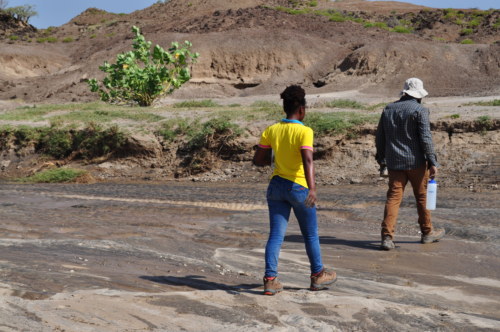
Clara and Joe relocating to another spot. Photo credit: Wambui Mbogo.
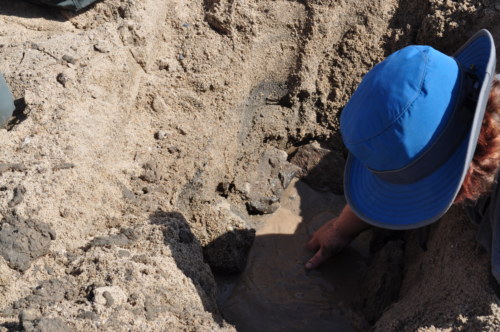
Emma scooping sand out of her well. Photo credit: Wambui Mbogo.
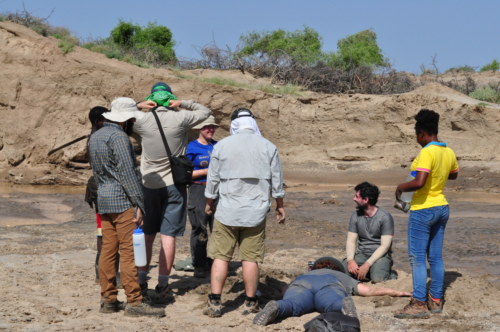
Zane explains how Zak and Emma found water quickly. Photo credit: Wambui Mbogo.
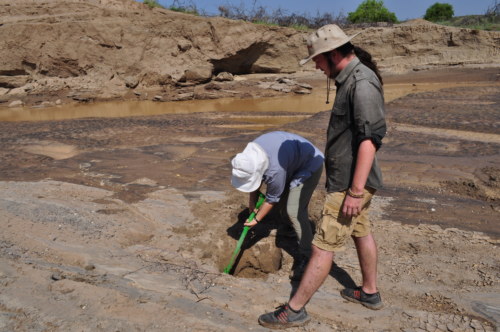
Amber using a shovel to dig a well. Photo credit: Wambui Mbogo.
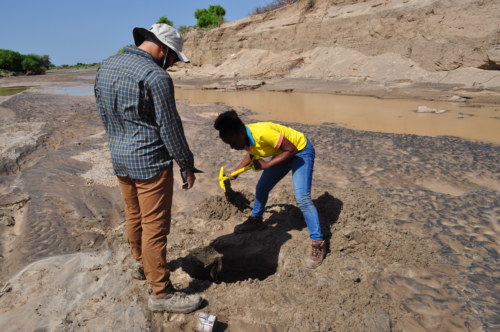
Clara using the shovel to dig. Photo credit: Wambui Mbogo.
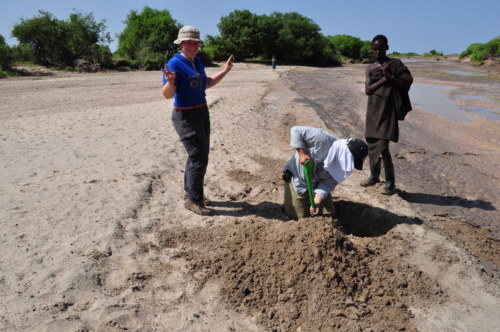
Jared digging the well. Photo credit: Wambui Mbogo.
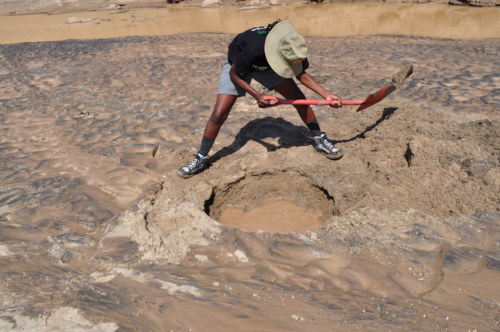
Our T.A., Medina, digging her well. Photo credit: Wambui Mbogo.
The turbidity of water collected from these wells is high, as a result of high silt, sand, and mud levels in groundwater. The Daassanach use a plant called “huluf” to clean the water. They remove the bark from the stem of a tree, which is then used to stir the water. The water is left to settle for about 5-10 minutes, and the dirt settles at the bottom of the container.
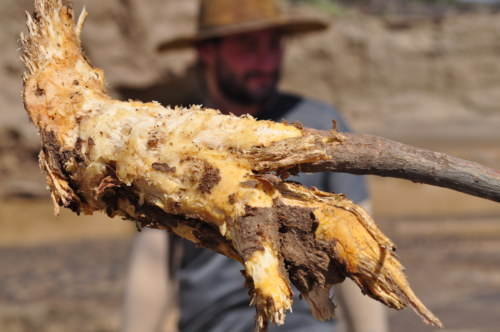
The huluf plant used to clean water by the Daassanach. Photo credit: Wambui Mbogo.
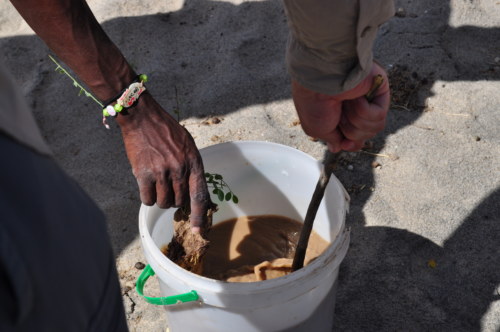
Zane and Arkol stirring the water using the huluf. Photo credit: Wambui Mbogo.
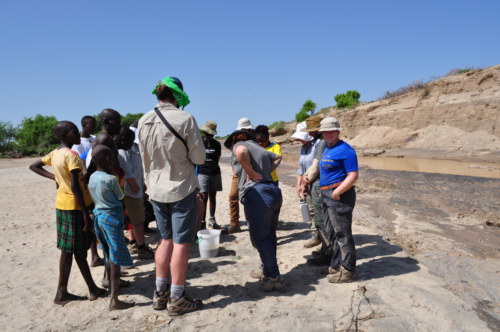
Students observing the separation process. Photo credit: Wambu Mbogo.
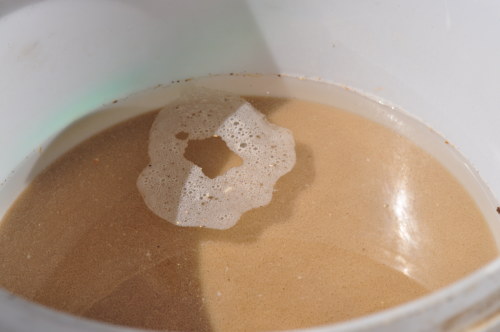
The onset of separation. Photo credit: Wambui Mbogo.
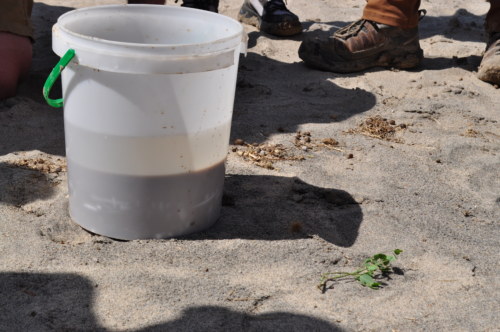
You can easily see the difference between the water and the sediments.
Photo credit: Wambui Mbogo.
More to follow!





